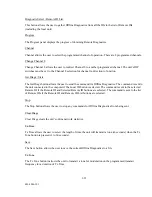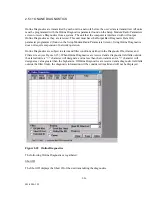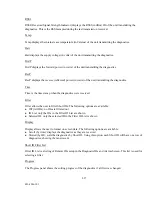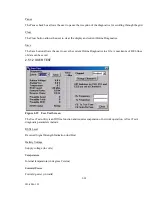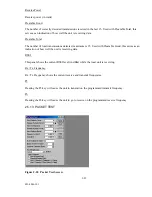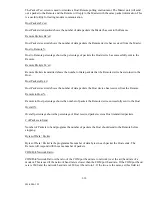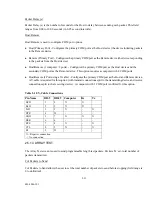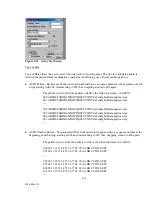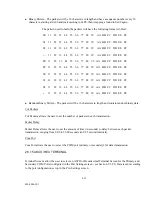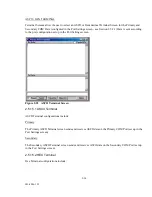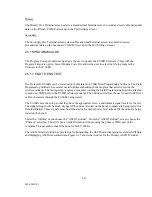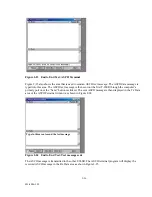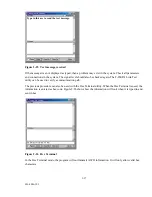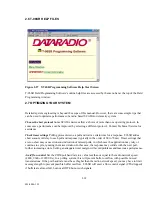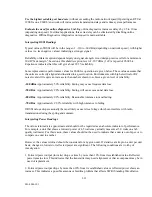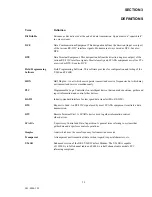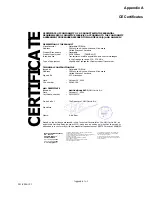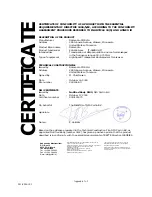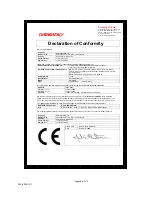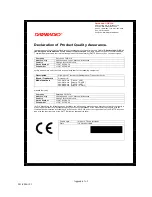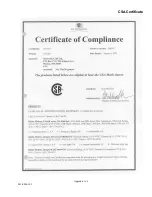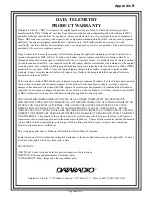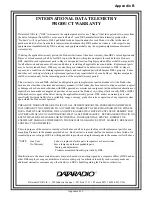
2-39
001-4006-101
Use the highest suitable port baud rate
(without exceeding the radio network speed) Operating an RTU at
1200 b/s on a 9600 b/s network will increase data transmission delays and reduce system performance.
Evaluate the need for online diagnostics
Enabling online diagnostics increases delays by 2.5 to 10 ms
(depending on speed). In critical applications, this extra delay can be eliminated by disabling online
diagnostics. Offline Diagnostics (diagnostics on request) remain available.
Interpreting RSSI Readings
Typical values of RSSI will be in the range of -110 to -60 dBm (depending on network speed), with higher
values (i.e. less negative values) indicating a stronger signal.
Reliability of data reception depends largely on signal strength. Good design practice calls for a minimum
30 dB “fade margin”, based on a threshold reception level of -107 dBm (1 uV) at speed of 9600 b/s.
Experience indicates that this will give about 99.5% reliability.
Some representative performance values for 9600 b/s operation are given below. These values assume that
the units are correctly aligned and installed in a quiet location. Environments with high electrical or RF
noise levels will require an increase in the numbers shown to achieve a given level of reliability.
-100 dBm
Approximately 50% reliability. Fading may cause frequent data loss.
-90 dBm
Approximately 90% reliability. Fading will cause occasional data loss.
-80 dBm
Approximately 99% reliability. Reasonable tolerance to most fading.
-70 dBm
Approximately 99.9% reliability with high tolerance to fading.
If RSSI values drops seasonally the most likely cause is tree foliage which can interfere with radio
transmissions during the spring and summer.
Interpreting Power Readings
The values returned are approximate and should not be regarded as an absolute indicator of performance.
For example, a unit that shows a forward power of 4.5 watts may actually measure at 5.0 watts on a lab
quality wattmeter. For this reason, these values should not be used to indicate that a unit is out of spec or to
compare one unit to another.
However, the values returned should be consistent for any given unit. If statistics are kept on a unit per unit
basis, changes in forward or reflected power are significant. The following conditions are worthy of
investigation.
1. Forward power output (in watts) drops or rises by more than 10% from its established value. Reflected
power remains low. This indicates that the transmitter may need alignment or that a component may be in
need of replacement.
2. Forward power output drops by more than 10% from its established value or reflected power shows an
increase. This indicates a possible antenna or feedline problem that affects SWR (Standing Wave Ratio).

